Excavation in the Storeroom: Reflections from Author Brice L. Erickson
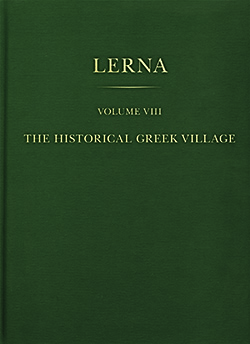
Brice Erickson’s new book The Historical Greek Village (Lerna VIII) is the first Lerna volume to study the material and the history of the site after the Bronze Age. When he first visited Lerna as an ASCSA student, he remembers “having no idea there was anything to show for the Archaic and Classical periods.” So how did he find himself working on the material and prepping it for publication almost 70 years after it had been excavated?
It was almost an accident, really. My first job after getting my Ph.D. was a year-long appointment at Dartmouth College to teach while Jerry Rutter was on sabbatical in 2001. Jerry had a talk with me one afternoon about the Lerna project and the need for someone to publish the less glamorous post–Bronze Age material. He encouraged me to take on the job. No one could tell me how much material there was, so I traveled to Greece the next summer to find out—there were crates and crates full of material and the fact that it had essentially been “reburied” a second time in a storeroom intrigued me. The hook was getting to open all those crates and see what might be inside!
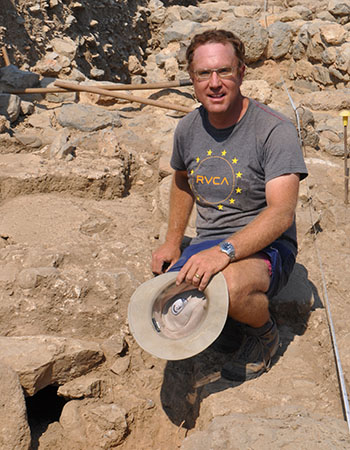
Brice Erickson working at Priniatikos Pyrgos on Crete
Erickson goes on to explain that “most people—scholars included—think of Lerna first and foremost as a Bronze Age site.” The prehistoric focus of archaeology in the Argolid, paired with the fact that visitors to the site are not able to see any evidence of the later periods, has created a disconnect between Lerna and Archaic and Classical developments in Greece. For this reason, the material was practically abandoned in a storeroom for decades, and the longer it sat there, the harder it was to initiate a research program that would lead to publication. With the passage of time, today’s researchers studying the material are losing access to the first-hand experiences of the original excavators. This slowly disappearing link had a significant impact on the way Erickson approached the material. He reflects,
I had to rely on archival records to a greater extent than ever to attempt to reconstruct the archaeological context of the material. The standards for record keeping on excavations were much different in the 1950s and varied from excavator to excavator on the Lerna team. Questions that might have been cleared up quickly in afternoon discussions between the excavators have become obscured in a fossilized record of notebook descriptions, drawings, and photographs. The challenge was to pull all these clues together from the archives to produce a vivid and dynamic picture of archaeological contexts and processes ultimately reflecting past human activities.
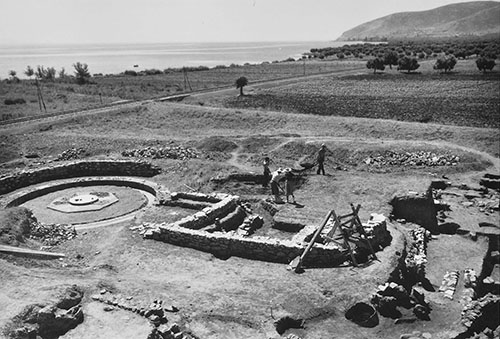
Photograph from the Lerna Excavations Archives showing the excavation of Classical well A:1
Erickson confesses that working with the excavation records required patience. Some of the records were more complete; others left gaps and prompted more questions. “It was important not to become discouraged by inconsistencies in the record keeping because solutions might present themselves to the problems the gaps raised.” Erickson recalls one example in particular:
The notebook records enabled a plan of the Early Iron Age cemetery to be reconstructed with a high degree of accuracy regarding the spatial relationship between tombs in the cemetery, but there remained a critical gap in our knowledge: no record was made of where precisely this cemetery was located in relation to the settlement. An unexpected clue solved the problem. Satellite imagery revealed the location of one of the cemetery trenches and provided a geographic lock for the cemetery as a whole.
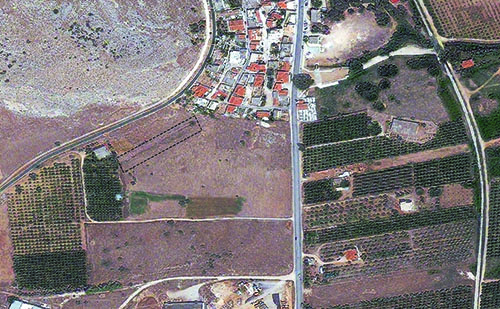
Satellite image showing the Lerna settlement site, the modern village of Myloi, and the southeastern slopes of Mt. Pontinos
Because Lerna was a rural community, some archaeologists working in the field half a century ago might have found it dull to try to tease out post–Bronze Age activities or locate a lost Early Iron Age cemetery. “If rural communities produced fancy stuff—monumental temples, civic buildings, statues, etc.—I have no doubt they would have long been targeted for excavation,” Erickson says. He admits that he had his own initial prejudices about rural life in antiquity, but was surprised to learn that the Early Iron Age burials were richly furnished with grave goods. He was similarly impressed by the extent of the trade networks evident at Lerna during the Archaic and Classical periods, with “products as diverse as Attic, Corinthian, and Laconian wine vessels and Corinthian coarse wares and wine transport jars.” Erickson explains,
The people of Lerna did a lot of the same things urban dwellers did. They fashioned a distinct identity for themselves through local religious traditions. Their village was connected to the outside world through overland and seaborne traffic. Even their drinking parties involved a level of sophistication that we associate with the urban symposium. All told, the picture presented by the archaeological record imparted a more urban feel to Lerna than I expected. It was as if the excavations from the 1950s had revealed a sliver of a city and not a village.
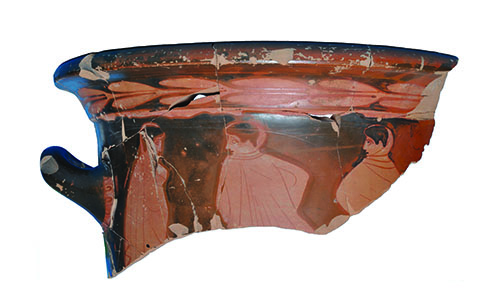
Attic red-figure bell krater dated to 440–430 B.C. found in Classical well A:1
As one of the first villages of the Archaic and Classical periods to be published in full, Lerna VIII offers scholars the unique opportunity to test long-held assumptions and hypotheses about ancient rural life. Although much of the pottery featured in Lerna VIII originally lacked established classification and chronological sequences, Erickson aims to construct such sequences for the Argolid based on the Lerna material. He admits that “it took many study seasons of looking at the same material over and over again before patterns came into view, patterns such as how shapes develop over time and how the assemblages came together to reflect past activities.” The results of his work open the door for more sophisticated historical reconstructions, including a better understanding of community identities. According to Erickson,
When the people of Lerna engaged in activities involving fancy decorated pottery, the stylistic content of that material occasionally signaled a distinctly Lernaean identity. Integrating the archaeological record with the textual tradition was often essential to make a convincing case of a process as complex as people shaping their identity.
In some ways Lerna may seem far afield from Erickson’s previous work on Crete, yet both tie into his future projects. From his perspective, Crete and Lerna “share a status as outsiders in the main tradition of Classical archaeology and history.” Crete, an island with “its own peculiar institutions and traditions,” is an outlier because of its social system. Lerna, located in the “heartland of Classical Greece,” was not the urban center by which researchers have traditionally evaluated Classical Greek achievement. Lerna and Crete are sites where Bronze Age finds have been the focus of archaeological research, prompting the necessity of establishing a basic archaeological foundation before being able to grapple with the bigger historical picture. Erickson concludes,
My experience with outliers such as Crete and Lerna has inspired me to write a history of the Athenian empire from the perspective of the subject states and others outside the Athenian center. This study will feature a ground-up perspective, from the margins looking in, as opposed to the heavily Athenocentric versions of the empire contained in the narrative of Thucydides and the epigraphic record. A richer archaeological perspective promises to shed new light on market exchange and other economic aspects of Athenian imperialism.